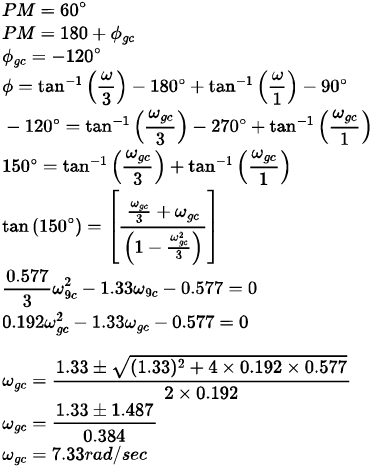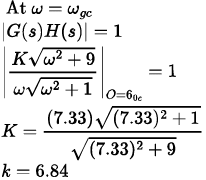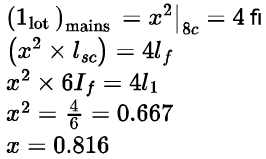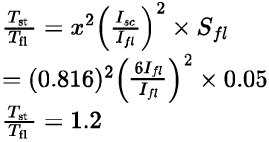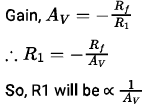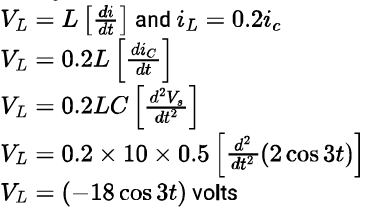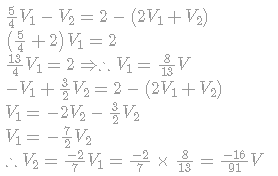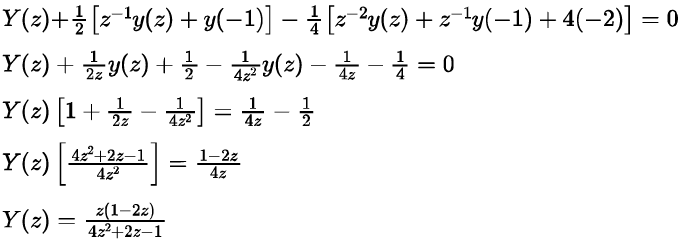GATE Practice Test: Electrical Engineering(EE)- 2 - Electrical Engineering (EE) MCQ
30 Questions MCQ Test - GATE Practice Test: Electrical Engineering(EE)- 2
A number of Indian goods face a _____ competition from Chinese goods in terms of prices and looks.
In the following question, out of the five alternatives, select the word similar in meaning to the given word.
Appease
Select the most appropriate option to substitute the underlined segment in the given sentence. If there is no need to substitute it, select No improvement.
It is not wise relying to anybody too much.
Select the most appropriate option to substitute the underlined segment in the given sentence. If no substitution is required, select No improvement.
His miserable condition made us wept.
Select the most appropriate word to fill in the blank.
Many items made of ivory were _____ from a dealer in antiques by the custom authorities at the Delhi airport.
Select the most appropriate option to substitute the underlined segment in the given sentence. If there is no need to substitute it, select No improvement
The man who seen the accident to occur telephoned the police.
Select the most appropriate option to substitute the underlined segment in the given sentence. If no substitution is required, select No improvement.
If you listen to English news, it improve your English.
Select the most appropriate word to fill in the blank.
Scientists at Cambridge University are ______ how plants can give us sustainable energy.
In the following question, out of the five alternatives, select the word similar in meaning to the given word.
Acrimonious
Direction: In the following question, a part of the sentence is bold. Below the sentence alternatives to the bold part are given at (A), (B) and (C) which may improve the sentence. Choose the correct alternative. In case ‘No improvement’ is needed, your answer is (D).
The professor has agreed to take remediable classes for the weaker students.
The open loop transfer function of a unity negative feedback system is given by  Find the value of 'K' such that the phase margin is 60▫
Find the value of 'K' such that the phase margin is 60▫
The starting current of a star-connected, 3-phase induction motor at rated voltage is 6 times the full load current and full load slip of 5%. Auto-transformer is used to limit the starting current from mains to 4 times the full load current. Determine the ratio of starting torque to the full load torque.
A DC voltage of 50 V is applied to a coil having R = 10 Ω, L = 10 H. The time taken by the current to reach 75% of its final value is –
For the operational amplifier circuit shown in the figure below, what is the maximum possible value of R1, if the voltage gain required is between – 10 and – 25? (The upper limit on RF is 1 MΩ)
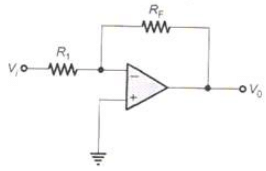
In the circuit of figure, Vs = 2 cos3t volts the VL(t) will be-
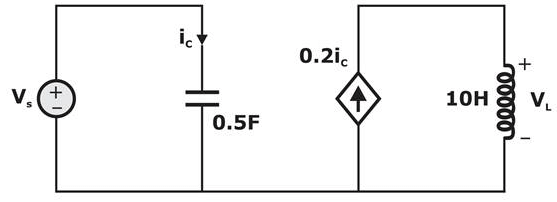
The power absorbed by 0.5 Ω resistance in the given circuit is:
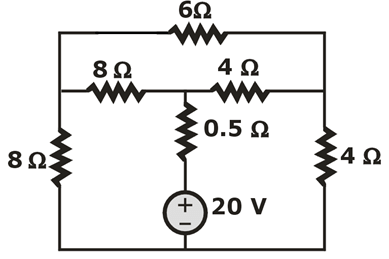
In a 132 kV system, the series inductance up to the point of circuit breaker location is 50 mH. The shunt capacitance at the circuit breaker terminal is 0.05 μF. The critical value of resistance in ohms required to be connected across the circuit breaker contacts which will give no transient oscillation is _____________.
A signal x(t) is denoted by a function which is periodic and continuous in its time domain representation. Then, which of the following would be true for the fourier transform of the signal
(i) Discrete and Periodic
(ii) Discrete and Aperiodic
(iii) Real{x(t)} transforms in to Real{X(jω)}
(iv) Real{x(t)} transforms in to Imag{X(jω)}
Find the differential equation of the system described by the transfer function given as:
![]()
Which of the following is correct for 1110100 ÷ 1010?
Fault current of a line to ground fault and LLL fault for an unloaded generator is same. If X1 =0.3 pu, X2 = 0.2 pu and Xo = 0.04 pu. Then calculate value of inductive reactance (Xn) required for natural grounding (in pu)
Determine the value of V and I in the given network.
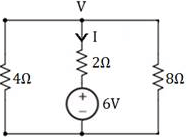
The instantaneous polarity of primary winding of an ideal transformer is shown in figure below. The direction of flux and polarity of instantaneous voltage induced in secondary is
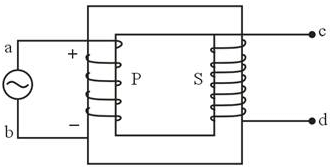
Given below is a 3-phase full-bridge rectifier. When the diode D3 is conducting, which of the following diodes cannot conduct at the same time?
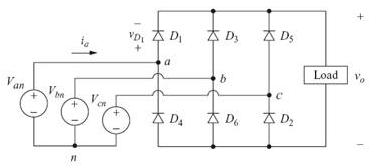
A simple slide wire potentiometer is used for measurement of current in a circuit. The voltage drop across a standard resistor of 0.5 Ω is balanced at 95 cm. find the magnitude of the current (in Ampere) if the standard cell emf of 1.95 volts is balanced at 60 cm.
Determine V0 ( in Volts) in the given network.
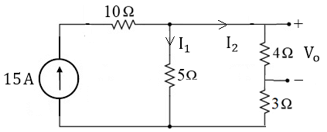
In the figure shown below, ‘N’ is two port network. If I = 2 A, then the values of V1 and V2 will be
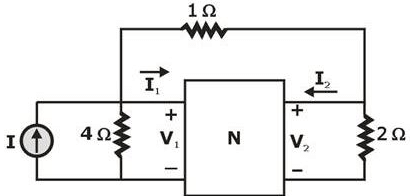
Assume the Y - parameter matrix for ' N′ as ![]()
Find the value of y{z), n > 0 if y(n) + ![]() (n - 1 ) -
(n - 1 ) - ![]() (n ~ 2) = 0 and y(-1) = y { - 2) = 1?
(n ~ 2) = 0 and y(-1) = y { - 2) = 1?
Let the state transition matrix of a system be given as 
Then which of the following is equal to ![]()
The full-load torque angle of a synchronous motor at rated voltage and frequency is 30° elect. The stator resistance is negligible. ______ degree will be the torque angle if the load torque and terminal voltage remaining constant, the excitation and frequency are raised by 10%



